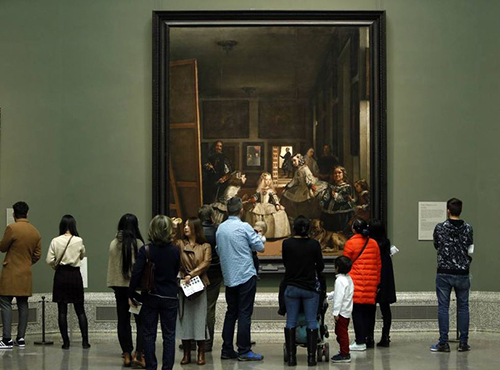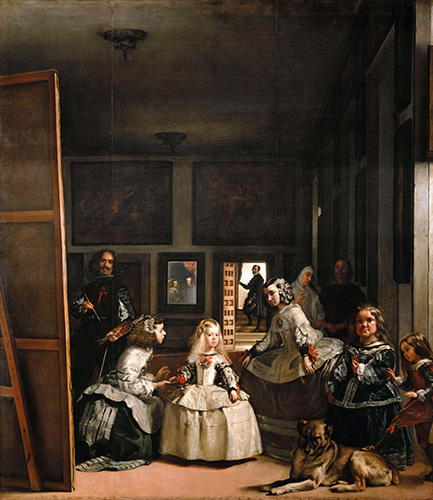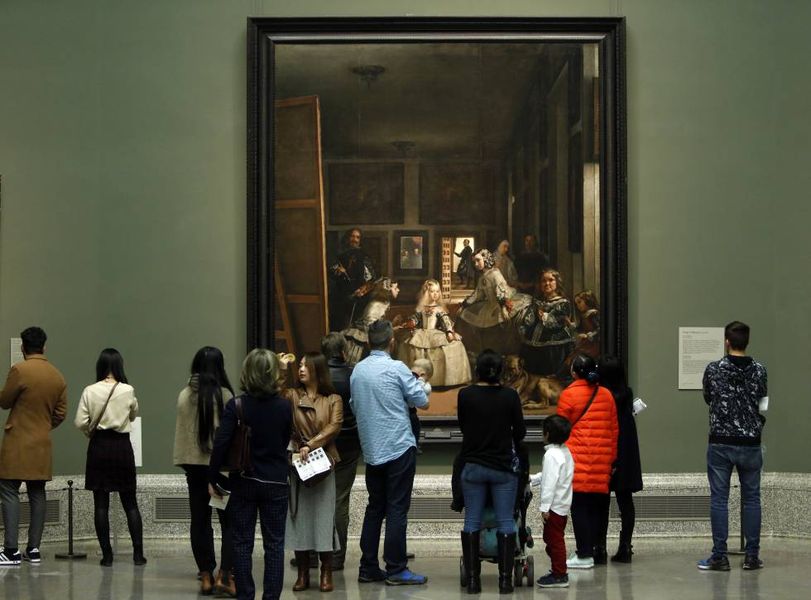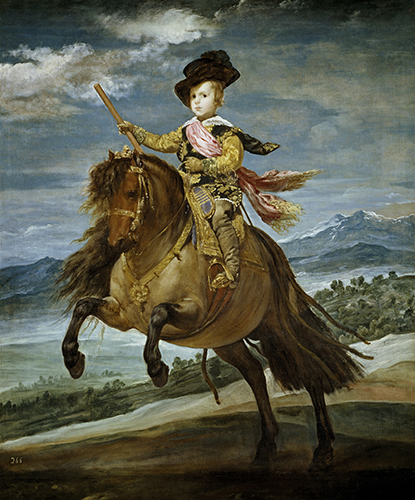
How to observe paintings – what elements to observe in portraits
ArtWizard 03.08.2020
"I would rather be the first painter of common things than second in the higher art."
Diego Velázquez
Having discussed the role of portraits and self-portraits in art history in our previous articles, we would see in the present one what are the elements that are interesting to be observed in portraits of famous painters. One such painter is Diego Velázquez, and author of some very complicated beautiful portraits, being one of the masters of portraiture in art history.
In 1622, thanks to his father-in-law's connections, Velázquez earned the chance to paint a portrait of the powerful Count-Duke of Olivares. The count-duke then recommended Velázquez's services to King Philip IV; upon seeing a completed portrait, the young king of Spain decided that no one else would paint him and appointed Velázquez one of his court painters and that event in his artistic life marked a period of famous portraits he made.

Diego Velázquez, Las Meninas, 1656
This work of Velásquez is astonishing, both as a portrait of the Infanta Margarita, the daughter of the Spanish king Felipe IV depicted in the painting with her “Meninas” or in other words the “ladies waiting” in the Alcázar Palace in Madrid. Some critics have considered this to be a visual treatise on the art of painting because the figurative interplay reveals spatial and phycological relationships, both within the family and at court, including artistic self-analysis.
It is a monumental work with life-sized figures. If the viewer stands in front of the Las Meninas, it feels as if he is part of it. The confident brushwork recreates mountains of deftly decorated clothing – the palest greys suggested by allowing the ground to show through – groups of people, the royal parents in a reflection in a distant mirror, and the artist himself. He is in control of the theater, at work on a canvas whose vertical format slices into the action of the room.
In his portraits Velásquez uses perspective to draw us into the story, recreating the room where his painting compositions take place as an extension of the art gallery in which the viewer stands. Both the floor and the ceiling remain relatively blank and in muted color and the walls are covered in other paintings that repeat the lines of perspective that anchor the composition.
On the left side of the painting, Velásquez looks the viewer in the eye and holds his brush as if in the act of painting with a range of colors displayed in his palette, as he has painted a self-portrait of himself along with the group portrait of the royal family. The Santiago Cross he wears, denoting the Order of the Knights of Santiago was added sometime after the completion of the work. The King and Queen are milky reflections in the mirror’s sheen at the back of the room.
While observing such types of monumental life scale paintings, the viewer sees some elements of how the composition is made, from the center of the painting to the scale background and foreground. In the center of the painting, bathed in light is depicted as the five years old Infanta, having her gaze directed at the viewer. She is depicted as attended by her maids – Maria Agustina Sarmiento and Isabel de Velasco. The whole composition revolves around the formal and lifelike depiction of little Infanta.
In terms of the scale of this painting, it is interesting to observe that at the background of the painting, Jose Nieto, the royal family’s master of tapestries, lends a sense of movement as astride some steps, he turns in the doorway, silhouetted against an external light source. The light runs from the front to the back of the painting and from the light illuminating the dwarfs' Maria Barbola and Nikolasito Pertusato. In this composition, Velásquez plays with scale and position. Adults appear small with the children and dwarf almost their equals in size.
In the foreground of the painting, Nikolasito Petrusato rests his foot playful on the mastiff who is almost as big as him: patient and solidly beautiful, the dog secures that edge of the painting. The dog, nearest to the viewer, had his head almost as large as that of the Infanta, as a body as wide as her skirt. Between the figures of Velásquez and the dog, the viewer can face an elegant serpentine line that pulls the whole composition together.

Las Meninas at Museo Nacional del Prado, Madrid, Spain
There is another type of portraits that Velásquez made during his artistic career as the royal court portraitist. That is a series of portraits of the royal family on horseback, that the artist made after spending some time in Rome, Italy, and being influenced by the great Italian masters. The portraits on horseback are painted using a different kind of composition and perspective.

Diego Velásquez, Prince Baltasar Carlos on Horseback, 1635-36
According to some art historians, the portrait of the little prince had been depicted in a way to subtract a political significance, representing him as a confident and calm horseman and a strong prospective leader. The little boy is in fact depicted seated on a thick rearing horse, underneath a lowering sky full of dark clouds. The horse is painted at the center of the painting, a plump, and peculiarly thick, that some art critics suggest this effect may have been calculated by Velásquez to appear as normal in size when the portrait is viewed from below.
The painting in fact represents a little child who seems lost, as the viewer can see in his gaze. It is painted by the artist in a way to underline the authority of the little prince, symbolized by the baton he holds, the sword he wears and the military sash on his chest. That confirms the role of the portraiture we discussed in our previous article, serving not only to express the artist's views but also in some cases serving to strengthen specific qualities or traits of the sitters who commissioned the portraits.
